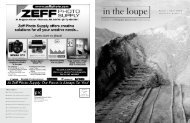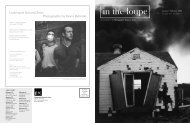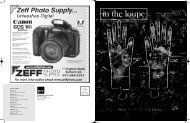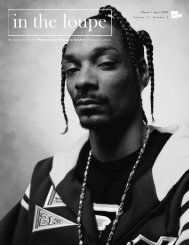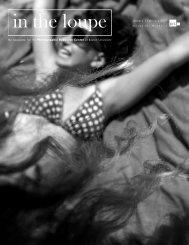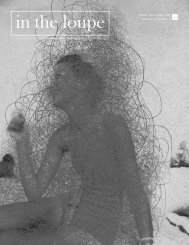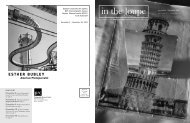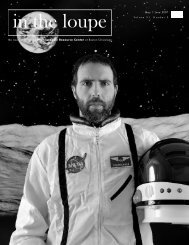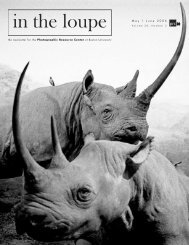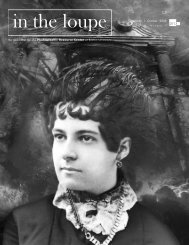February | March 2010 - Boston Photography Focus
February | March 2010 - Boston Photography Focus
February | March 2010 - Boston Photography Focus
- No tags were found...
Create successful ePaper yourself
Turn your PDF publications into a flip-book with our unique Google optimized e-Paper software.
interviewRB: This is a very complex question. Ithink that at the end of the day, you onlysee what you are ready to see. I don’t thinkthat I could be doing what I am doing; sayfive years ago, so ultimately what I amdoing is an imaginative creative exerciseworking in a particular place that I call theboarding house. On one hand, photographyis about light reflecting from thephysical objects. On the other hand, it’sabout how you integrate the world andthe space around you to create meaningin the pictures. It is an interactive process,but ultimately it is about the way I see andthink.JL: How do the inhabitants react to you beingthere?Roger Ballen, from the monograph Boarding House, courtesy of the artist andGagosian GalleryAn Interview with Roger BallenBy Jason Landry, November 18, 2009Jason Landry: How did you go from being ageologist and mining consultant to a photographer?Roger Ballen: I was a photographerbefore I was involved in the geologybusiness. My mother worked at Magnumin the 1960s and started one of the firstphotography galleries in the states. So, I’vebeen involved in photography, one way orthe other, since I was a young boy. I firststarted taking serious pictures around1968 and have been doing that for nowover forty years. I decided quite early onthat I didn’t want to be a professional photographer.I didn’t want to make a livingtaking pictures. <strong>Photography</strong> for me was avery personal exercise and I really wasn’tinterested in the type of assignments thatcommercial photographers were doing. SoI decided that I wanted to do somethingthat involved work in the outdoors anddecided that being a geologist fitted myneeds. I’m very lucky in a sense that geologysupported this habit for thirty yearsbefore I started to make a living out of it.JL: There is a real primitive aspect of the humancondition that is drawn out through theimages in your monograph Boarding House.David Travis talks about it in the introductionto the book. Do you compose the images in yourmind prior to photographing them, or do youreact to each individual scenario?RB: I’ve gotten to know the inhabitantsvery well and I’ve been in very strangeplaces for many years so I think I’ve feltthe sixth sense on how to work with peoplein these places. The people were very,very pleased that I came into the boardinghouse to photograph. I think they enjoyedposing, they enjoyed working with me, andthey enjoyed talking to me. Things like thisdon’t work out well unless they’re interactiveand ultimately don’t work out welllike other things in life if both sides don’tbenefit, so it never was a one-way street.JL: Are you more interested in the objects thatare in the boarding house or the people?RB: I wouldn’t say either; I think I’m interestedin creating a holistic photograph. Aphotograph that reflects a certain level ofdepth of meaning and an ability to expressmy own style, whether that involves usinganimals or objects or people, it isn’t reallythat relevant. For many, many years mostof my photographs had people in them.Somewhere around 2003, the faces disappeared.There have always been traces ofpeople in the photographs. It’s quite interestingby removing the faces, the otheraspects of the photograph have a lot morespace to breath and they come forth in amuch more integrated way than if there isa strong facial presence of a subject. Therewere always many aspects in those photographsI really never looked at, and nowthey are being looked at because thereisn’t a particular face in the photograph.18 > www.prcboston.org




